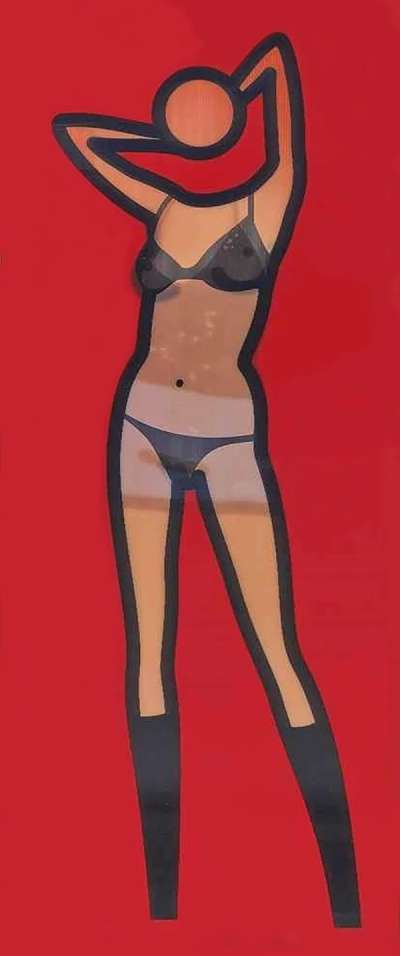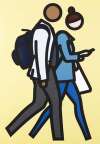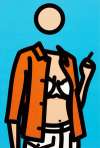Sara
In Sara, Julian Opie presents an image of the ‘ideal’ female body as consumed through the mass media. His figures' characteristic lack of features here draws further attention to the curves of the subject's body and her sexuality, forcing the viewer to consider why they find this image so alluring and what constitutes attractiveness.
Julian Opie Sara For sale
Sara Value (5 Years)
Sales data across the Sara series by Julian Opie varies by print. While standout works have sold at auction for up to £32000, other editions in the series remain rare to market or have yet to appear publicly for sale. Of those tracked, average selling prices have ranged from £22000 to £32000, with an annual growth rate of 2.62% across available data. Collectors should note the discrepancy in performance between more visible and lesser-seen editions when considering value potential in this series.
Sara Market value
Auction Results
| Artwork | Auction Date | Auction House | Return to Seller | Hammer Price | Buyer Paid |
|---|---|---|---|---|---|
 Sara Dancing Topless Julian Opie Signed Print | 18 Jan 2023 | Phillips London | £22,100 | £26,000 | £35,000 |
 Sara Gets Undressed (red) Julian Opie Signed Print | 17 Nov 2022 | Bonhams New Bond Street | £25,500 | £30,000 | £40,000 |
Sell Your Art
with Us
with Us
Join Our Network of Collectors. Buy, Sell and Track Demand
Meaning & Analysis
Julian Opie’s Sara collection features a set of full-length images of a woman provocatively posed and rendered in the artist’s typical figurative style. This series presents Sara as an anonymous figure, with a blank circle for a head hovering over her shoulders and without a neck or even feet. In some prints the model is dressed in a skirt and top, in others she has removed her clothes to reveal her underwear and prints such as Sarah, Stretch (2003) show the figure nude.
Presenting an image of the ‘ideal’ female body as consumed through the mass media, Opie creates an image whereby the figure’s lack of features actually draws more attention to the curves in her body and her sexuality. Opie has produced many images of this particular model in varying poses, but in most cases chooses to show Sara standing seductively with her arms behind her head and hips swayed to the side.
Opie has created these images through his renowned technique of using computer drawing programmes. Initially Opie captures the sitters through digital photographs so as to get a feel for their personality and point to any crucial details that are integral to their character. He then chooses his favourite images and draws over the individual digital photograph on the computer to produce a simplified pictogram that resembles a sign.
As a computer-generated image, rendered in such a way that the figure appears more like a sign than an individual, Opie produces a depersonalised portrait of the stereotypical ‘ideal’ woman. Opie depicts not an identifiable woman, but the process of abstraction itself and makes a point on how we look at images. By presenting the figure without any facial features and a floating blank circle as a head, Opie forces the viewer to consider why they find this image so alluring and what constitutes attractiveness.








